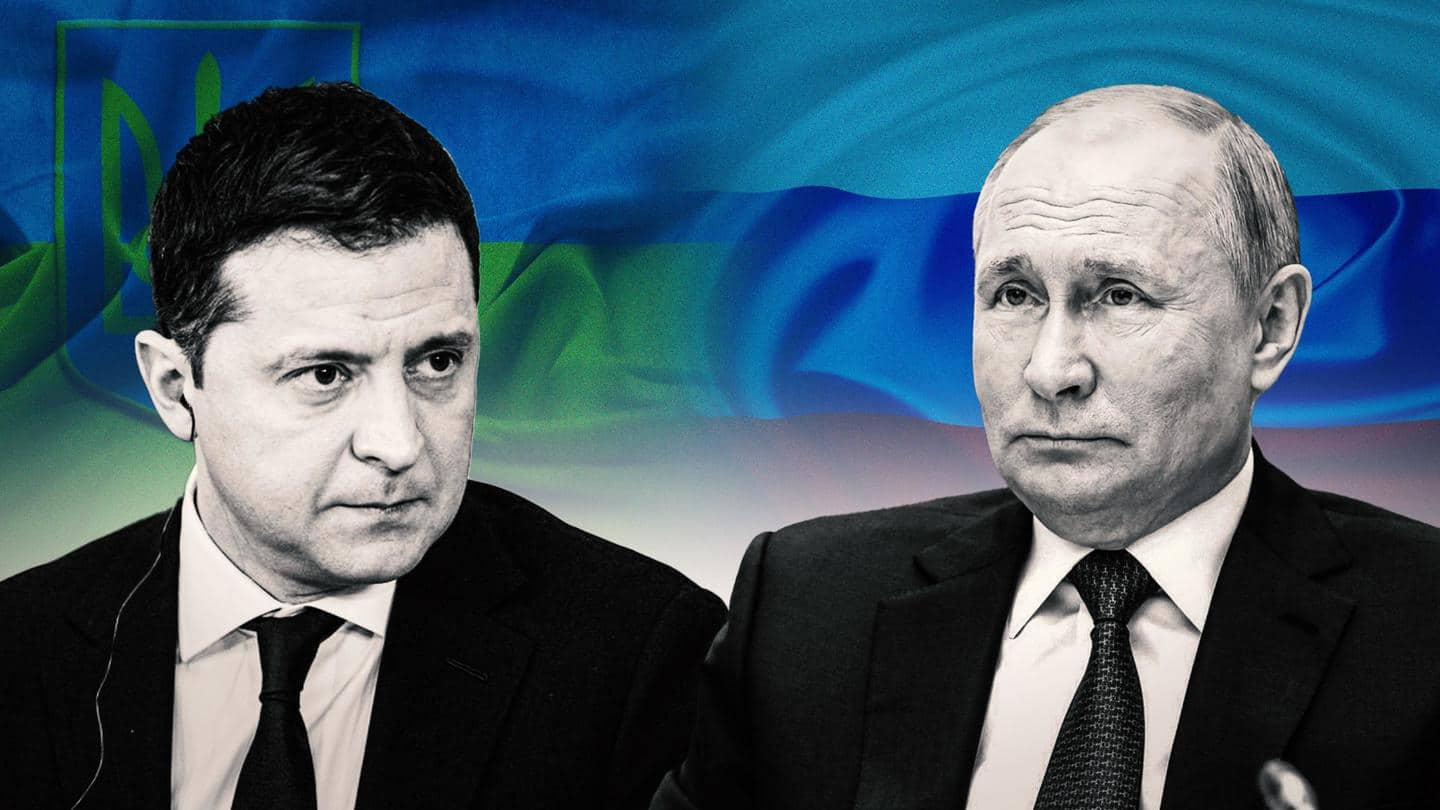
How did the Russia-Ukraine conflict start this time?
What's the story
Tensions between Russia and Ukraine escalated drastically as Moscow Thursday launched a "military operation" against its neighbor. Multiple casualties have been reported as air sirens indicating an invasion in Kyiv caused the panicked public to flee. Ukraine called upon its civilians to join the armed conflict, while Russia says it doesn't intend to infringe on Ukraine's interests. How did the situation become this bad?
History
History of Russia and Ukraine
To understand the dynamic of the two countries, it is important to know that Ukraine was a part of the Russian empire until the fall of the USSR in 1991. Ukraine has since tried to align itself with the West. After citizen protests led to the removal of Ukrainian President Viktor Yanukovych in 2014 (who leaned toward Russia), Moscow annexed Ukraine's Crimean Peninsula.
Information
Russia blamed for fueling separatism in Ukraine
Following these developments, pro-Russia and anti-government separatist groups became more prominent in east Ukraine; particularly in the Donetsk and Luhansk regions—collectively called Donbas. Russia continues to deny accusations of backing the separatist movement in Donbas, where 14,000 people have reportedly died fighting since 2014.
Recent past
Russia miffed over Ukraine's desire to join NATO
Last year, Ukrainian President Volodymyr Zelenskyy asked to be able to join the intergovernmental military alliance NATO (North Atlantic Treaty Organization). However, Russia feels strongly against NATO's eastward expansion. According to Russia, this would provide NATO members the opportunity to establish military bases in the region. Russia also justifies its opposition saying the move would allow Ukraine to take the separatist-held regions by force.
The US
Situation worsened after US intervention
In December 2021, United States President Joe Biden threatened economic sanctions against Russia if it invaded Ukraine. Several rounds of talks were held between US and Russia, however, Moscow said its concerns regarding NATO remained unheard. The US also found Russia's security demands unacceptable. Meanwhile, NATO increased deployment in Eastern Europe to remain on stand-by, much to the chagrin of the Kremlin.
Information
Russia then sent troops to Ukraine border
As Ukraine continued to push for its NATO membership, Russia heightened military deployment near its border for "training exercises." By November, 1,00,000 soldiers with tanks were present along the border, according to Ukraine. Russia justified the move as a response to aggression by NATO allies.
Other developments
Ukraine, Russia warned West against spreading panic
In January, Chinese Foreign Minister Wang Yi asked US Secretary of State Antony Blinken to take Russia's "legitimate security concerns" seriously. As tensions rose, Ukraine's President Zelenkskyy warned Western countries against creating "panic" that would only hurt his country's economy. Russia's UN envoy Vasily Nebenzya also blamed the US for exaggerating the threat even as Moscow said it did not intend to invade Ukraine.
Escalation
US recently said 'invasion could begin in days'
The Russian military build-up, however, continued along the Ukraine border. Earlier this month, Biden's National Security Adviser Jake Sullivan said an invasion could begin within days, citing US intelligence reports. Several countries called upon their citizens to leave Ukraine. On February 21, Russia's Vladimir Putin signed a presidential decree recognizing the rebel-led regions of Donetsk and Luhansk as independent and sent troops there.
Information
Putin announced 'military operation' against Ukraine today
As the situation continued to heat up, Western sanctions against Russia were announced on Tuesday. On Thursday morning, Putin announced a "military operation" against Ukraine to eliminate, what he said, was a serious threat. Follow the latest developments on the Russia-Ukraine crisis live.